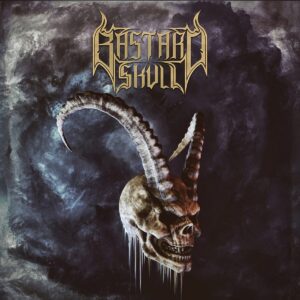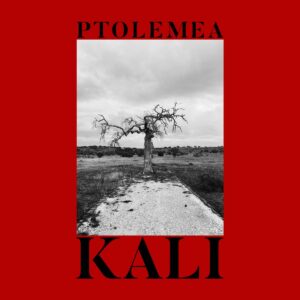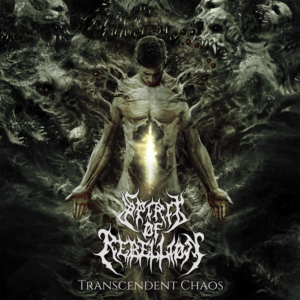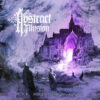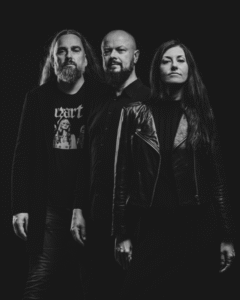Merok
Alutka

From their EPK, "ALUTKAis a Doom Ritual Black Metal band composed of Marie (Brouillard, Vertige… France) and Déhà (… Belgium). The band was formed in 2023, out of a mourning period mixed with a need of exploring old tribal customs. After a fully black metal experience, Marie felt like trying a more doom approach of music, and the urge of using clean vocals to express her deepest primitive feelings. The first album "Merok" was born, then recorded in Opus Magnum Studio, Brussels by the talented studio master, Déhà, who added his musical contribution and arrangements, and finally signed on Transcendance label. The concept is inspired by the Toraja people and their quite special funeral rites, and by cults and death in general. ALUTKA is grief, but also relief through rituals and ancestral traditions.
The album has six songs, and "Matampu'" is first, and is indeed a ritual of sorts. Backing choirs lead to a dangerous and dark sound, with riffs starting to fill in the dead spaces. A steadily beating drum provides much of the ritualistic sound. "Laissez entrer ceux qui pleurent" features a more traditional Black and Doom Metal amalgamation. The two styles work well together, because Black Metal can have very solemn tones. The steady beating drum is almost like your heart starting to give out, and leaves you wondering when the last beat will play. The vocal screams have some rage behind them, in an otherwise very depressive sound. "Des Teintes d'éternité" is a lengthy offering, that carries with it the weight of funeral proceedings. The slower passages are gut wrenching, and if you can't feel the pain, you might be dead.
"Kombengi" has more ominous tones, almost as if the marching drums are warning of something ahead. The vocal screams might be that thing. They are hopelessly tortured, and sound like the come from a twisted beast. "Aluk To Dolo" is a song that celebrates desolation and despair, and the weight of both on your shoulders is almost too much to bear. The clean elements are just as weighted. They sooth you at first, but their real intention is to heap more on top of your plate. "Exuvia" closes the album. Loosely defined, it means to shed your outer skin. More ritualistic sound continue in this song. It's a slow mover, so the horrid and desolate sound sinks into your bones, slowly freezing you to death.
The album is a fragile bridge between what was and what now is. It's a moment when time feels suspended, and the rhythms of ordinary life are intentionally disrupted to make space for sorrow, reflection, and memory. To mourn is not just to suffer; it's to affirm the significance of what's been lost. The duration of mourning may vary, but its essence remains the same: it marks the soul's attempt to realign itself in a world permanently altered. When the mourning period ends, symbolically, it may represent a kind of return, to a life that now carries the imprint of grief, woven into the fabric of ongoing existence.
8 / 10
Excellent
Songwriting
Musicianship
Memorability
Production
"Merok" Track-listing:
1. Matampu'
2. Laissez entrer ceux qui pleurent
3. Des Teintes d’éternité
4. Kombengi
5. Aluk To Dolo
6. Exuvia
Alutka Lineup:
Brouillard
Déhà
More results...
